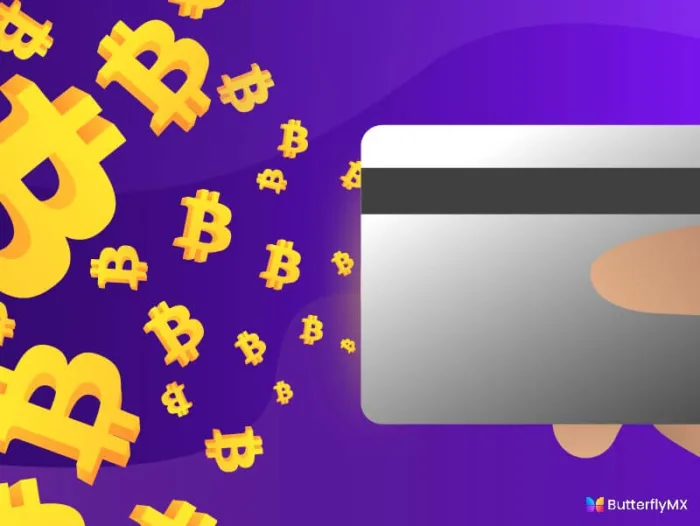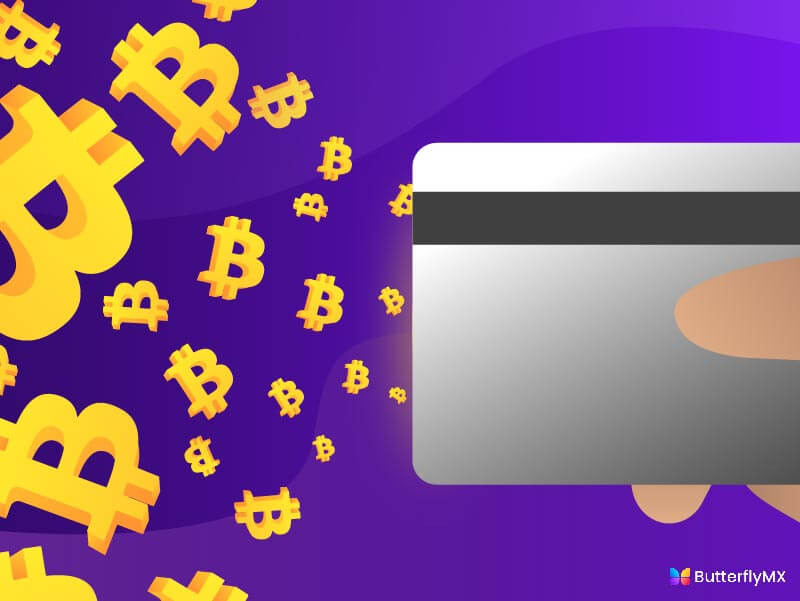
Disclaimer: This content is for informational purposes only, you should not construe any such information as legal, tax, investment, financial, or other advice. Nothing contained on our site constitutes a solicitation, recommendation, endorsement, or offer by ButterflyMX or any third-party service provider. ButterflyMX is not a financial adviser. You should always seek independent legal, financial, taxation, or other advice from a licensed professional.
Bitcoin captured headlines as it rocketed to new highs in recent years. Cryptocurrencies like Bitcoin are becoming mainstream. As they do, the technology that powers them is becoming more influential in our everyday lives. More and more businesses are using the blockchain-based technology behind Bitcoin to store data and make more efficient decisions. And the field of real estate is no exception, especially in digital real estate.
DeFi, or decentralized finance, is one of the ways blockchains and cryptocurrency are transforming our world. Read on to learn what DeFi is and how it works. Then, we’ll go over three ways that DeFi for real estate will transform the way we manage, work at, and live in buildings.
In this post, you’ll learn:
What is DeFi?
DeFi — or “decentralized finance” — is a collection of blockchain-based financial services that use automated workflows to make financial decisions.
As opposed to traditional banks, there isn’t anybody at the head of a DeFi service. In fact, there are no people involved in these transactions at all. Instead of a person, a set of programmed rules called a smart contract administers a DeFi service. This smart contract is in charge of accepting and paying out money and adjusting to market conditions as they change.
Like traditional banks and other financial institutions, there are DeFi services for crucial economic functions such as:
- Lending
- Borrowing
- Trading
- Funding
- Derivatives
- Insurance
How did DeFi get started?
Financial workers have been using technology to make their jobs easier for decades. They’ve embraced developments like the computerization of the stock market. Finance workers in the 1980s were also quick to adopt electronic messaging systems. In these ways, financial services workers have continually made their jobs simpler and more efficient.
But no matter how much these workers adopt technology, people who use these traditional finance systems will always run into problems. Even today, we find ourselves on hold with our banks’ customer service departments for hours to resolve issues. And slow customer service is only one of the problems you’ll run into using a traditional bank.
Technology can’t always solve these problems. Banks may be able to use technology to speed up communication between their workers. But they also require scores of people to manually verify and approve transactions. Additionally, traditional banks can make unfavorable decisions, or even commit fraud, because all of their decision-making power is concentrated in the hands of a select few. In other words, they’re centralized.
That’s where DeFi comes in.
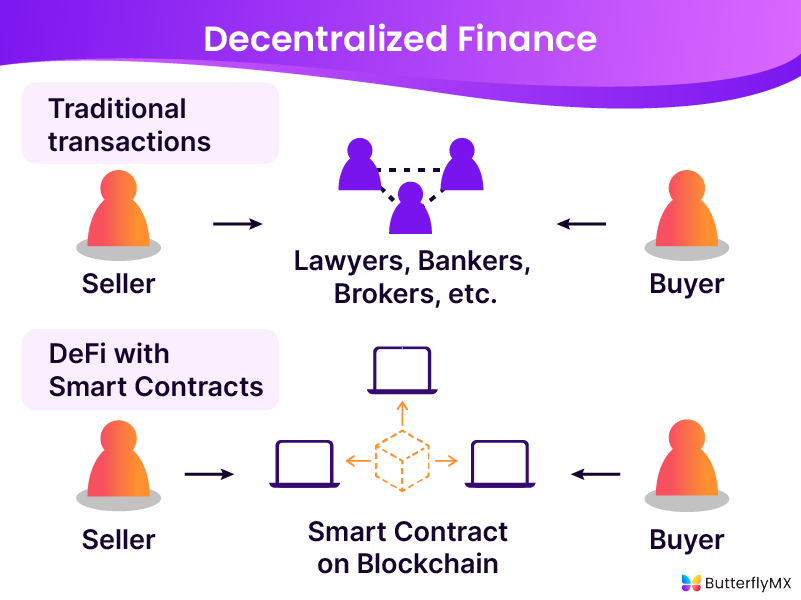
Cryptocurrency and the birth of DeFi
DeFi exists today because of innovations in the cryptocurrency space. In 2009, Bitcoin was created, and with it came the potential for an entirely new financial system. Bitcoin is accessible anywhere because it is based on blockchain. Also due to blockchain, Bitcoin’s transactions are always transparent and independently verifiable. Blockchain, as introduced by Bitcoin, helped lay the groundwork for DeFi.
The other ingredient DeFi needed to take off was introduced to the cryptocurrency scene in 2015. Developers Vitalik Buterin and Gavin Wood created Ethereum. Ethereum is another cryptocurrency that takes greater advantage of blockchain technology.
Ethereum is special because it’s more versatile than Bitcoin. You can use a programming language called Solidity to write programs that will run on Ethereum’s blockchain.
Bitcoin users store records of their transactions on Bitcoin’s blockchain. In the same way, developers can use Ethereum’s blockchain to host applications, protocols, and smart contracts that are always accessible.
Cryptocurrency developers and other enthusiasts had an epiphany. An open financial system separate from traditional banking institutions could change the world. These developers used smart contracts and blockchains as the basis for a decentralized financial system, and DeFi was born.
How does DeFi work?
DeFi services work by first gathering information from blockchains, and then acting on that information using the rules laid out by smart contracts.
Blockchain is a type of database that allows users to view, access, and verify the information they upload onto it. Blockchains share their data across multiple computers called nodes. This decentralized node setup makes data on the blockchain immutable. After you’ve put data onto the blockchain, nobody can modify it.
Blockchains can record things like logistical data and information about financial transactions. Additionally, data on a blockchain is easily accessible. This prevents the issues that you encounter in paper-based systems.
A smart contract is a type of computer program that carries out actions depending on whether certain economic conditions are met or not. You can think of a smart contract like a vending machine. When the machine receives money, it responds by dispensing a soda. That principle of person-free economic exchange guides the concept of smart contracts.
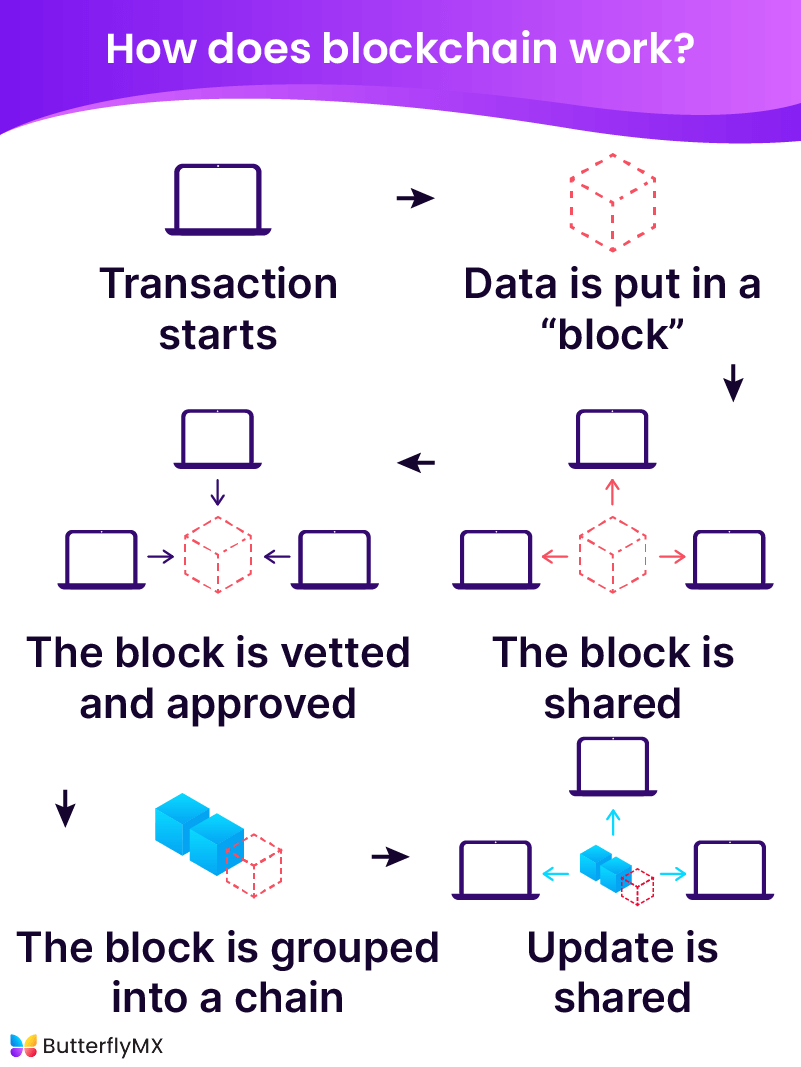
Here’s what happens when two people agree to use a smart contract:
- The creator lays out the conditions that will trigger the smart contract. Some smart contract programming languages are designed for non-programmers. However, after two people hammer out the terms of their agreement, they might choose to hire a third party to actually write the contract.
- The creator puts the smart contract onto the blockchain. When a smart contract is uploaded onto a blockchain, a copy of it is sent to each node on the chain. This prevents hackers from changing the terms of the contract. Even if a hacker managed to change the contract on one node, the blockchain holds too many verified copies of the original contract. The blockchain would revert the change immediately.
- If the condition is fulfilled, the smart contract executes. Programs called oracles make sure smart contracts have all the info they need. Oracles pull real-time data from places like the stock exchange or an Internet of Things (IoT) device and upload it onto the blockchain. Then, smart contracts use this data to make decisions.
These contracts can be designed to work together. In addition, programmers can create advanced smart contracts that react to even tiny shifts in market conditions. The biggest DeFi services today run on an interlocking system of smart contracts that connect buyers, sellers, and lenders.
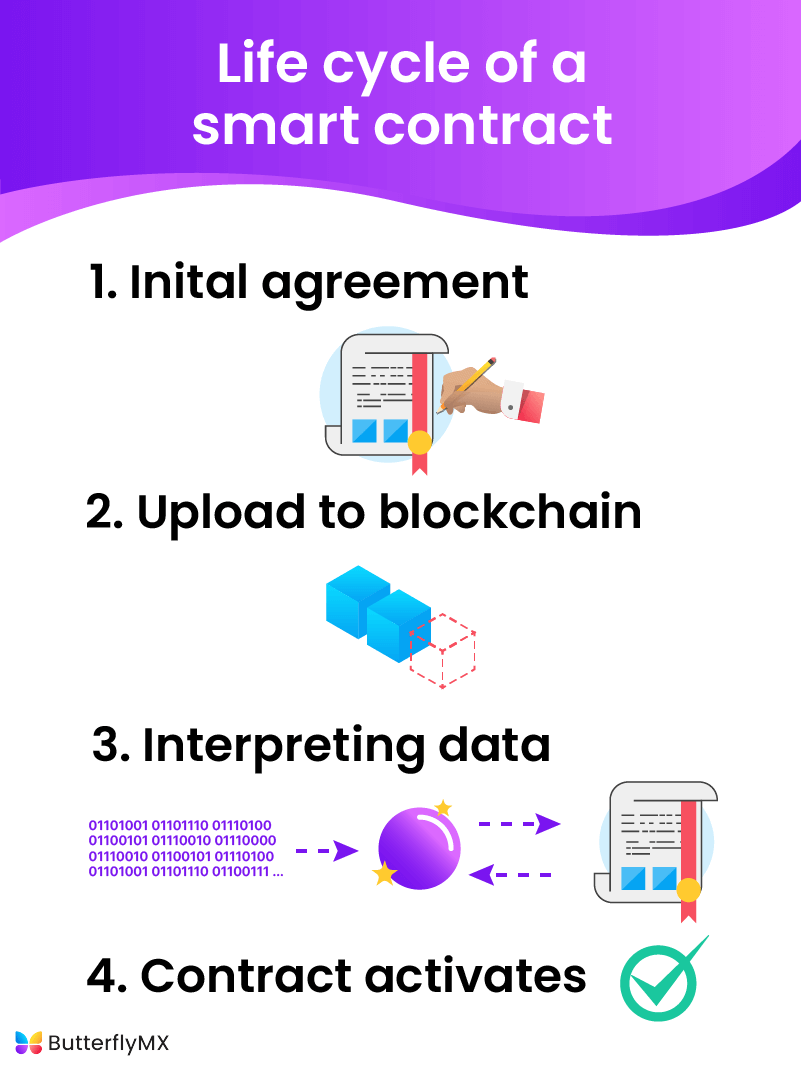
What are some examples of DeFi?
One of the most important DeFi services today is Uniswap, a decentralized currency exchange. Uniswap works by connecting lenders who want to earn interest on their money to traders who want to get loans or exchange cryptocurrencies with each other. The benefit: Lenders and borrowers can connect without needing a third party like a banker or a broker. Other DeFi protocols, like Aave or Compound, offer similar services.
Another large DeFi service is Yearn Finance. Yearn specializes in a new way of earning interest on your cryptocurrency called yield farming. Yearn uses protocols that automatically invest in and sell different cryptocurrencies.
Kyber Network focuses on easily enabling transactions between different cryptocurrency platforms and applications. Kyber Network positions itself as a developer-friendly protocol that can act as a “bridge” between two different apps.
RealT is a platform specifically dedicated to DeFi for real estate. RealT allows investors to use decentralized exchanges to invest in property.
How DeFi affects you
If you’re a property owner or manager, you’re probably curious to learn how DeFi might affect the real estate industry.
Here are three cutting-edge uses of DeFi in real estate:
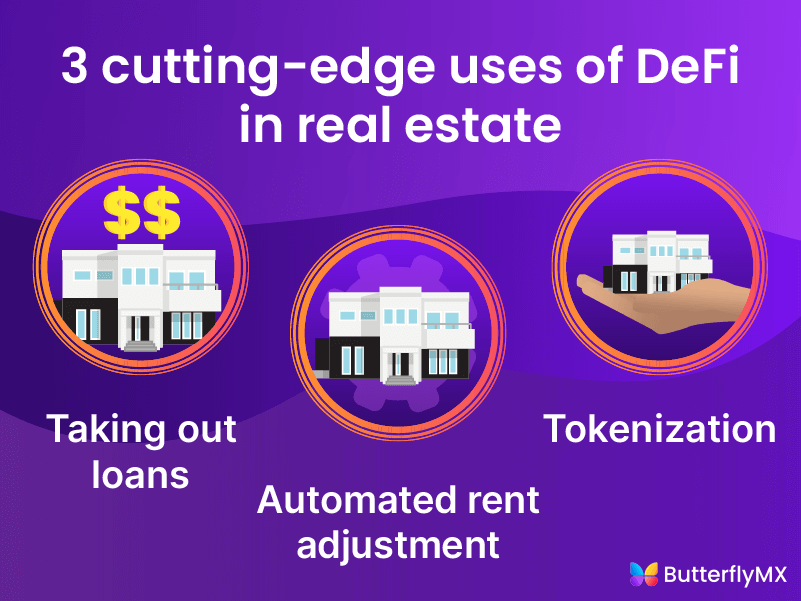
1. Tokenization of properties
In 2020, $690 million worth of real estate was tokenized. In 2021, that number grew to $14.3 billion. Enter one of the most exciting new movements in real estate and tokenize your properties.
DeFi smart contracts allow for the tokenization of assets. Tokenization is like holding a share of a company. Tokens can represent fractional ownership of any asset, from an exotic car to real estate.
The benefits of holding something in tokens include:
- More regular income. Instead of receiving your income quarterly — as is the norm under most centralized finance systems — you can access a much more regular stream of income. Imagine all the paperwork you’d have to wade through if you wanted to receive weekly income from a traditional LLC structure. Under a token system, you could receive your money monthly, weekly, or even daily.
- Tokens have much more versatility than simply owning a share of something. For example, developers are adding a function to tokens that lets them work like keys. So, you could use your token not only to prove ownership, but also as a security credential to access your property. Developers are thinking of representing these next-generation tokens as non-fungible tokens, or NFTs.
2. Loans and mortgages using DeFi
DeFi aims to replace every aspect of the traditional banking sector. Loans and mortgages are no exception. Say goodbye to weeklong waiting periods as banks trudge through verification processes. Use DeFi for real estate financials instead. Using DeFi, you’d be able to take out a loan or mortgage in seconds.
Another crucial upside to using DeFi for loans and mortgages is the ability to tokenize. Let’s say that you took out a mortgage using a centralized banking system to buy a property. Then, the price of that property rises. Unfortunately, according to traditional bankers, there’s nothing you can do to take advantage. You wouldn’t be able to sell off fractions of that property to capitalize on that value.
Here’s what would happen if you used your property as collateral for a DeFi mortgage instead. You could sell off fractional shares of your property’s value as it rose and pay your mortgage off sooner.
3. Automated rent adjustment
The COVID-19 pandemic forced thousands of businesses to adopt work-from-home policies, which remain popular today. Some companies have embraced a fully remote model of working. Other businesses are implementing hybrid work models. Using DeFi technology, these companies can save money by optimizing the way they rent out office space.
With a blockchain-based data entry system, businesses can rent exactly the office space they need, for the exact length of time they need. Not a square foot more and not an hour longer. Businesses no longer have to rent an entire floor for a fixed length of time. Instead, businesses can reserve desks or square footage. The result? They pay a fraction of what they used to in rent.
Setting up a rental agreement like this with a paper-based analog system would be nearly impossible. But DeFi for real estate eliminates the need for paper entirely. However, if you’re renting using a blockchain-based DeFi service, all of the information about your property usage is readily accessible — and ready to save you money.
Takeaways
DeFi is already revolutionizing the way we use and think of financial services, especially in the real estate industry.
DeFi for real estate has several advantages over a traditional banking system. Compared to a centralized banking system, DeFi services are more transparent, more powerful, and use cutting-edge technology. And when you apply those advantages to the real estate sector, they increase flexibility and transparency for property owners, managers, and residents.
